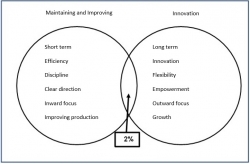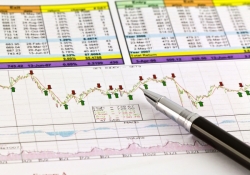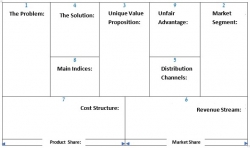Why Do Companies Accumulate Very Expensive Dead Inventory?
For example, in the heavy chemistry industry, the company has engines or large pumps, and such engines can cost tens of thousands of NIS. In order not to shut down facilities, which mostly operate nonstop (24/7), the company has dozens such engines. The engines and pumps are stored in a large dedicated warehouse. Over the years the company will renew facilities and slowly the large engines will become unsuitable and unnecessary.
At first they will be kept because letting go is hard (you think this is an odd thing to say? test yourself – how many old clothes do you still keep, but no longer wear…) but this too will pass. In the end the company will have a warehouse full of equipment once valued at hundreds of thousands of NIS, yet which has lost all value.
The old equipment becomes useless and new engines and pumps are needed, suited to the new facilities. The company must build a new warehouse for the new equipment. At the same time, the old engines and pumps are still kept, even though they will no longer be used.
Dead inventory is accumulated by many companies. Most often it will consist of mistakenly-ordered raw materials, or excess materials which "were on sale", or that have become redundant due to product changes.
Doesn’t It Make More Sense to Get Rid of Dead Stock?
First, I must provide a short explanation for those unfamiliar with financial reports and companies' account management – what is the value of inventory in financial reports:
Let's assume your company manufactured a product for sale, but has yet to sell it come December 31st. At the end of the year inventory is taken, and what exists is listed in the company's account books. This inventory has value, according to which it will be listed.
The same way, if the company purchased raw materials which haven’t been used yet, those have value according to which they will be listed. Spare parts also have a value. At the end of the year, or every quarter, the company's gains are examined, as are its costs and changes in inventory. Did its value increase or decrease?
And so, if a company acknowledges inventory which has lost value as such, its profitability will be damaged, and the company might even have to report a loss.
For that reason, companies keep inventory of raw materials or finished products, or spare parts which have long since lost all value, and continue listing them in financial reports and balances as having monetary value.
And What Happens if Profitability is damaged or a Loss is Reported?
The aim of every CEO is to produce profit, if the company loses they might lose their job. Additionally, many CEOs' earnings depend on the company's performance.
Owners too can earn dividends only when the company is profitable. So owners have an interest in creating profit. At times this profit will be "forced" (for instance through inventory, as I'm showing now).
When the company goes to a bank for loans, the bank will look at its financial reports, and banks don’t like loaning to losing companies.
This is even more emphasized in public companies (traded in the stock market) where profits are examined every quarter and CEOs are under pressure to demonstrate profitability every such period.
And What if the Reported Profit Doesn’t Reflect the Real Picture?
Nobody looks at the guts of inventory. You look at periodical reports of profits and losses and search no further.
That is, a company may have valueless inventory, listed as amounting to millions of NIS and costing considerable sums to maintain (I will present the visible and invisible costs below) – only so it doesn’t show a loss.
A company's financial reports don’t always show the real picture, but rather the one it wants us to see. Let's call it a cosmetic procedure. Like dying your hair.
The Costs of Having Dead Inventory
To summarize the costs of having dead inventory in one line, think of 5S: maintaining dead inventory is the opposite of 5S.
It has visible and invisible (but still existing) costs. Visible costs are all those related to the space taken up by the inventory. Renting space, or an additional warehouse to replace the one taken up by the dead inventory, and taxes.
Invisible costs are, for instance, the mess created by dead inventory which makes it difficult to find necessary supplies. It is not unusual to buy raw materials or spare parts which you already have in storage, but can't find because of the mess. I've also come across companies which couldn’t find existing finished products they had in storage, and remanufactured them.
All those raw materials, products, or spare parts laying in storage that you can't find will soon become more dead inventory.
In the mess created, every search takes more time, and you have to employee additional warehouse workers.
So the conclusion is clear: dead stock has no real value, but maintaining it costs the company a lot of money.
And Will This Continue On Forever?
No, in some situation a company will erase the value of the dead inventory. This doesn’t happen a lot. Searching online has produced only to results of two public companies doing so in the last five years:
First, a publication from last year (2017): Enzymotec erased inventory valued at 3.3 million dollars. It is unclear why this step was taken, and it may be because there was no main shareholder, and Frutarom (one of the shareholders) had an interest in decreasing the company's value in order to purchase it at a lower price.
Second, a publication from 2014: Kamada erased inventory valued at 3 million dollars. Again, no clear reason was mentioned in the media.
In both cases we can see an erasure of about 10 million NIS. A not inconsiderable sum.
In many cases, a new CEO who began work before the end of the year will work to erase inventory, even if that means showing a loss in the financial reports, in order to show an improvement the following year - the first full year of his term as CEO.
On rare occasions, companies will get rid of dead inventory and erase it from the books only because of 5S, or similar aims at efficiency and clearing out warehouses.
So, we see that despite high costs and damages caused by dead inventory, companies aren’t in a hurry to get rid of it.
What Can You Get from a Yearly Inventory Check?
These days, as we come to the end of the year, companies conduct inventory checks. Officially this is for accounting purposes. That is, it is obligatory to conduct an inventory check for the IRS under the supervision of your accountant. At the end of the check, the accountant signs off on it. For that purpose, they randomly comes to monitor its progress.
When an accountant finds that the value of counted inventory is "more or less" identical to what was listed in the books before the check, they're content. But you shouldn't be. Inventory checks require great effort and man-hours.
Changes in inventory can easily change a company's profit to a loss, or the other way around.
But, as you "have to" make a full and accurate inventory check, take the opportunity to gain these advantages:
- Check inventory. Some companies, usually small ones, come to an arrangement with their accountant – they say that inventory didn’t from year to year, and so don’t have to conduct checks. Those who do so lose more than they gain. It may save work hours, but cements the mess in the warehouse. In the end, already existing stock will be purchased again, because they are unable to find what they already have. Dead inventory will increase, and overall costs will be high, even if unrecognized and their root in the mess not understood.
- Inventory compliance. When you conduct an inventory check, you can get a real sense of inventory compliance: was the inventory counted accurate compared to what was listed in the records? I think inventory compliance is one of the most important issues for every manufacturer.
- Identifying dead inventory. As you prepare for an inventory check, it is easy to identify items that hadn’t moved over the last year, or more. Yes, digitized record systems can indicate that, when checked. But not all companies have such systems. And mainly, you don't always remember to check this issue. An inventory check will show this, even without specifically looking at the issue in the records.
- Organized warehouses. Thanks to preparations for an inventory check, which require warehouses to be organized, mess is sorted an order maintained.
Summary and Recommendation
Many companies accumulate dead inventory due to technological changes (high cost spare parts are no longer needed), improvement in the product (no longer necessary raw materials), too much production or purchasing, mistakes, or neglect in inventory management.
Companies avoid erasing dead inventory in order to no decrease profit in financial reports (or even show a loss), and pay dearly for that avoidance.
I recommend you manage inventory carefully, in order to avoid creating dead inventory. And if you already have dead inventory – get rid of it in small amounts over time, so the effect on the financial reports is minor. Alternatively, if you begin re-organization, or another restructuring situation – erase as much dead inventory as possible.
If you are interested in my professional help in improving your management of inventory or your warehouses, personally or for your company, the best way is to send a request through the Get in Touch form in my website (here).












 My First Book: Manage! Best Value Practices for Effective Management
My First Book: Manage! Best Value Practices for Effective Management